Tech Art: Blending Creativity and Technology
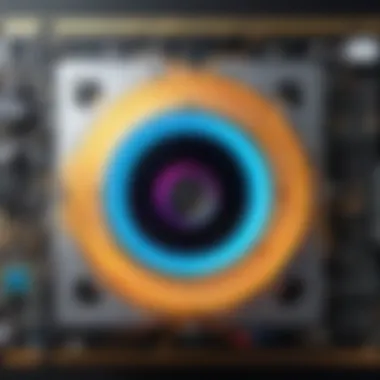
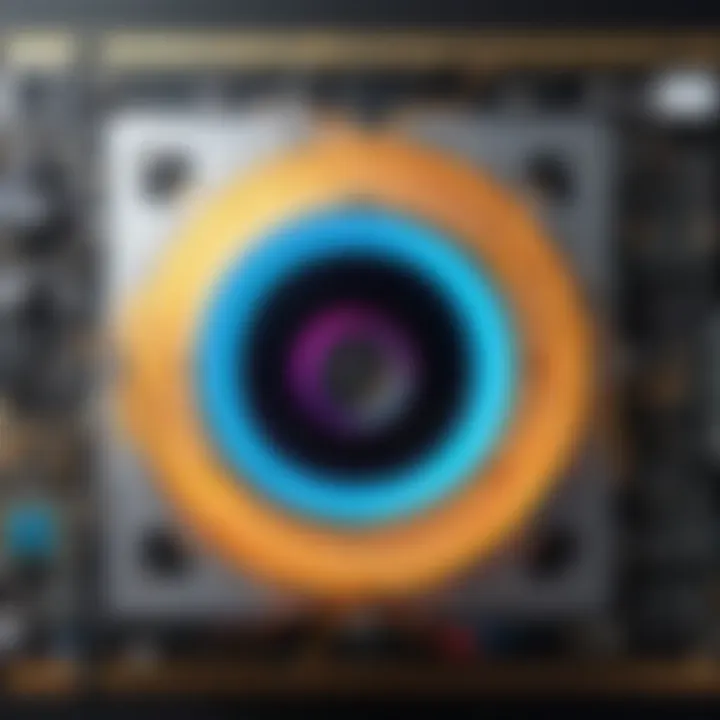
Intro
In our rapidly evolving digital age, the fusion of creativity and technology has given rise to a captivating new field known as tech art. This discipline not only showcases the innovative potential of technology in artistic expression but also raises compelling questions about the nature of creativity itself. How does one define artistry in a world increasingly dominated by algorithms, machine learning, and digital interfaces?
As we embark on an exploration of tech art, it's essential to grasp the numerous facets of this intriguing intersection. From the earliest experiments with electronic media to modern installations incorporating virtual reality and augmented reality, tech art has undergone a remarkable transformation. This journey will take us through various forms and techniques central to this field while evaluating the profound impact that digital technologies exert on creative processes.
Tech art is not merely a niche but a burgeoning phenomenon influencing how artists create, engage, and connect with their audiences. The article will delve into the historical context, examining the evolution of tech art as a legitimate artistic discipline. By uncovering its significance in contemporary culture and education, we will uncover the threads that bind creativity and technology in our digital landscape.
Before diving into the particulars, it is crucial to acknowledge the technological underpinnings that inform this art form. With the last two decades ushering in unprecedented advancements, the relationship between tech and art has never been more critical—laying the groundwork for further investigation into this toast of our modern society.
Technology Insights
Understanding the technological insights associated with tech art lays a sturdy foundation for this exploration. Art making in today’s world relies heavily on various digital tools and platforms.
Latest Tech Trends
One cannot ignore how recent technology trends are shaping the tech art landscape. Some key trends include:
- Artificial Intelligence Art Creation: Artists are increasingly turning to AI as both a medium and collaborator.
- Virtual Reality Experiences: Immersive environments that allow audiences to engage with art in a new sensory dimension.
- Blockchain and NFTs: Redefining ownership in the digital realm, making it much easier for artists to monetize their work securely.
Innovation in Tech
Innovation fuels the creative process, introducing unique methods of engaging with art. From 3D printing sculptures to animated installations that respond to viewer input, artists harness technology for greater creative expression.
"Tech art challenges pre-existing notions of authorship and originality, provoking thought about what it means to be an artist in a digital age."
Product Reviews
Tech art creators rely on an array of digital tools to bring their visions to life. Some software and hardware products have emerged as favorites within the tech art community. Consider the following:
- Processing: An open-source graphical library and integrated development environment (IDE) for the visual arts.
- Max/MSP: A visual programming language for music and multimedia.
- Adobe Creative Suite: Industry-standard tools such as Photoshop and After Effects for digital art production.
By leveraging these technologies, artists can easily manipulate digital assets, create interactive experiences, and explore innovative techniques previously thought unattainable.
Entertainment Highlights
As tech art permeates popular culture, it stirs up a medley of entertainment influences, shaping our collective artistic narrative. Understanding the interplay between tech and entertainment sheds light on this evolving field.
Preamble to Tech Art
The melding of technology and creativity is where the magic happens, representing a crucial frontier in the world of modern artistry. Tech art has emerged as a unique discipline that blurs the lines between artistic expression and technical prowess. It’s not just about creating visually striking pieces but also pushing the boundaries of what we deem possible within the realm of art. This narrative serves as a gateway to understanding the importance and impact of tech art, examining various aspects of it such as forms, techniques, and cultural implications.
Defining Tech Art
Tech art can be seen as a playground where innovation meets imagination. It encompasses a wide array of activities that utilize technology to enhance or redefine artistic expression. From intricate digital installations to innovative interactive pieces, tech art invites audiences into immersive experiences that engage both the mind and the senses. At its heart, tech art challenges traditional concepts of authorship and authenticity while celebrating customization and algorithmic creativity.
The beauty of tech art lies not solely in its aesthetics but also in its capacity to utilize emerging technologies. For instance, artists sometimes rely on coding and software design, infusing their vision into computer-generated imagery and virtual art forms. This crowding of technology into artistic spaces opens doors to entirely new narratives and experiences. As the world becomes more interconnected, tech art reflects the fluid dialogue between the digital and the physical, fostering a culture of creativity that reverberates beyond gallery walls.
Historical Background
Understanding the historical context of tech art reveals its evolution alongside technological advancements. The seeds of tech art can be traced back to the 1960s when artists began experimenting with video and computer technologies, seeking to push beyond the limits of paint and canvas. Projects in early multimedia sought to combine various forms of media to create comprehensive experiences—think back to works like Nam June Paik's pioneering video installations that foreshadowed a future art scene enriched by technology.
In the following decades, the rise of personal computing and the internet opened further avenues for artistic exploration. The late 1990s and early 2000s saw a surge of artists leveraging web-based platforms and digital tools, facilitating the widespread dissemination of their art. This period marked a turning point as artists started to view technology not just as a tool but as a collaborative partner in the creative process.
The timeline following the new millennium has since been characterized by an explosion of genres within tech art. Artists embracing virtual reality, interactive installations, and even robotics have flourished, bringing forth a rich tapestry of innovative practices that reflect today’s digital landscapes. Thus, the historical framework not only tells a tale of technology’s hands in art but also illustrates how artists have adapted and innovated amid changing tides.
The journey of tech art illustrates how creative expression evolves with technology, paving roads that were previously unimagined. It’s a reflection of the times, a canvas of our digital age.
In navigating this exploration of tech art, we find both echoes of past movements and glimpses of future directions. The subsequent sections will unravel the forms, techniques, and broader impacts of tech art on culture, education, and the artistic community at large.
The Evolution of Tech Art
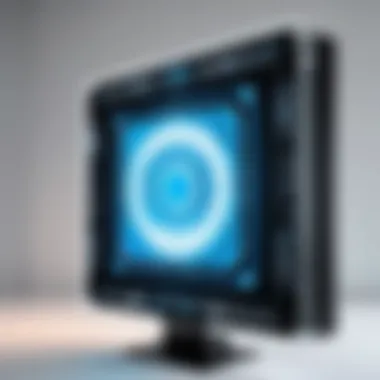
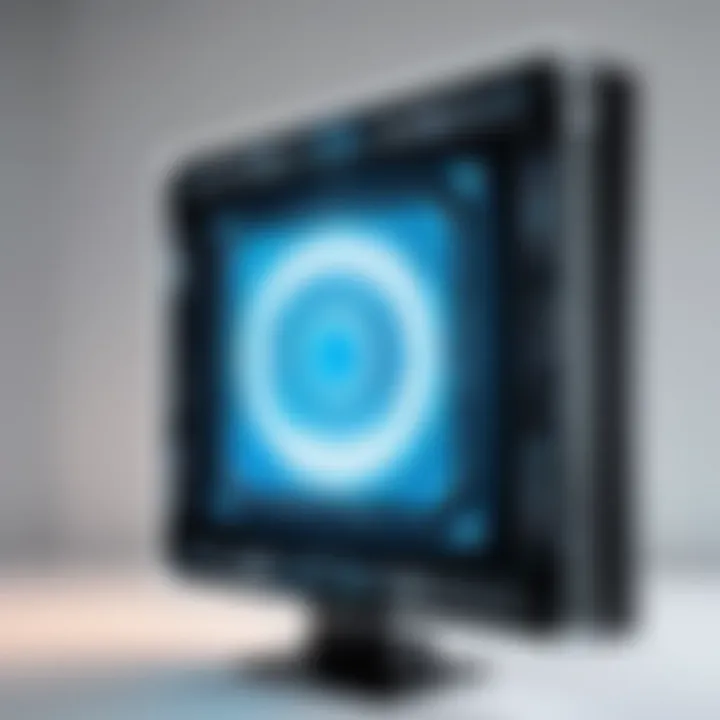
The journey of tech art is a fascinating saga that bridges the realms of creativity and technological advancement. This evolution reflects not just the changing tools artists have at their disposal but also how society interacts with and interprets art itself. As new innovations unfold, they prompt fresh perspectives and methodologies, thus reshaping the very fabric of artistic expression. Understanding this evolution is essential to grasp the ongoing shifts within the creative landscape and recognize the broader cultural implications.
Pioneering Artists and Movements
The emergence of tech art can be traced back to a handful of visionary artists who saw technology not merely as a tool but as an integral component of their creative process. Take, for instance, the works of Nam June Paik, often hailed as the father of video art, who utilized television and video technology to challenge the conventions of traditional art forms. In the 1960s, his installations transformed viewers into participants, reshaping the act of viewing into a participatory experience. His influence paved the way for future generations, encouraging artists to leverage new media in unprecedented ways.
Another noteworthy figure is Jerry Uelsmann, who, long before digital imaging was mainstream, employed innovative darkroom techniques to merge photography and surrealism. Artists like him laid the groundwork, inspiring others to rethink the boundaries of their disciplines. The Net Art movement of the 1990s further expanded on these concepts. Artists such as Vuk Cosic played with the internet as a medium, challenging perceptions of authorship and accessibility.
These pioneering movements are crucial as they demonstrate an evolving dialogue between creativity and technology, setting the stage for the dynamic practices we see today.
Impact of New Technologies
The swift progression of technology undeniably alters the landscape of artistic expression. The introduction of advanced software, powerful computers, and interactive digital platforms drastically broadened the horizons for artists. The ability to create immersive experiences has transformed the viewer's engagement from mere observation to active participation. These developments facilitate a multi-sensory experience, allowing art to exceed traditional limitations.
Consider how augmented reality (AR) and virtual reality (VR) have transformed perceptions of space and interaction within art. Artists leverage these tools to construct environments where users can navigate through digital realms, experiencing art through a new lens. For example, installations like "The Obliteration Room" by Yayoi Kusama have enlisted AR elements, making immersive experiences where the audience's participation alters the artwork itself.
The impact doesn't stop at viewer interaction. With AI-generated art, technology also presents ethical issues regarding authorship and creativity. Works created by artificial intelligences, like those from OpenAI's DALL-E, prompt questions about the essence of creativity. Are these pieces art? Or are they merely products of algorithms mimicking human creativity?
This evolving conversation around technology's role in creation is crucial. As artists navigate these new avenues, they continue to challenge and redefine what constitutes art within the framework of digital culture.
"The evolution of tech art not only reflects technological advancement but also a cultural shift in how we perceive and create art."
Forms of Tech Art
Tech art manifests in various forms, demonstrating the limitless possibilities when creativity entwines with technology. Understanding these different forms is essential as they not only highlight the innovative nature of tech art but also showcase its relevance in contemporary culture. Each form has unique elements and benefits, embodying distinct perspectives on creativity.
Digital Installations
Digital installations are a cornerstone of tech art, blending physical spaces with digital mediums. These installations often transform public areas into immersive experiences that engage the viewer on multiple levels. For instance, a large-scale projection mapping event can turn a dull wall into a vibrant canvas, narrating stories through light and color. Artists utilize tools like After Effects or Procreate to create stunning visuals that capture attention and evoke emotion.
The remarkable aspect of digital installations is their ability to reach a wider audience. Unlike traditional art displayed in galleries, these installations are often positioned in accessible environments. This democratization of art allows people who may not consider themselves "art enthusiasts" to experience and appreciate the creativity being showcased.
Moreover, engaging with digital installations often invites interaction. Viewers might manipulate variables through motion sensors or touchscreens, giving them a sense of ownership over the artwork. It's a form of co-creation that makes art an experience to be felt rather than simply observed.
Interactive Art
Interactive art pushes the boundaries even further by demanding participation from the audience. It compels viewers to be more than passive observers, inviting them to dive into the artwork itself. A prime example of this would be installations that respond to movement or sound, altering visuals based on the audience's input. Artworks created with software like Unity or Arduino integrate elements of game design, making the audience's choices vital to the narrative.
Such engagement can foster a deeper emotional connection to the art. As participants navigate through the piece, their decisions impact the outcome, creating a personalized experience. This sense of agency redefines how art can communicate ideas and elicit responses, encouraging viewers to reflect on their role within the artistic dialogue.
Virtual Reality Art
Virtual reality art represents a fusion of technology and imagination, allowing creators to construct entire worlds that viewers can explore. With immersive headsets like the Oculus Rift and HTC Vive, artists can fabricate experiences that resonate with all the senses. Users can step into a meticulously crafted digital space, walk around, and even interact with virtual elements.
The beauty of virtual reality lies in its ability to transport individuals to places limited only by creativity. Consider a VR artwork that simulates walking through a surreal landscape painted by a digital artist. Participants can experience spatial aesthetics in ways traditional mediums cannot offer, like observing a piece from every conceivable angle. This form of tech art expands the boundaries of the creative process, adding depth in storytelling and emotional engagement.
Generative Art
Generative art is a fascinating field where algorithms play a vital role in the creation of artworks. It involves using computer programs to generate visuals that change and evolve, often in real-time. Artists write code that dictates how the art will manifest, allowing for infinite variations. The unpredictability of this process showcases a new layer of creativity, where the artist is both a creator and a facilitator.
Tools like Processing and p5.js are key in the development of generative art, enabling artists to create dynamic visual pieces that often captivate viewers. This form also invites discussions surrounding authorship and originality. If an artwork can generate itself through code, who can claim ownership?
Generative art captivates not only artists but also audiences looking to engage with the complexities of creativity in the digital age. By challenging traditional perceptions of authorship, it encourages conversations on the essence of creation itself.
"Art is not freedom from distraction; it is the freedom to be fully present."
Tech Art Techniques
In the realm of tech art, the intersection of technology and artistic expression is not merely an afterthought; it is foundational. Techniques in this domain are diverse, encompassing a spectrum from software innovations to hardware developments. Understanding these techniques is essential, as they significantly influence how artists create and engage their audiences.
Software and Tools
Software is the linchpin of tech art. Artists leverage a wide array of tools that shape their creative process. Popular choices include software like Processing, Max/MSP, and TouchDesigner. These platforms allow for real-time interaction and manipulation of visuals and sound, creating immersive experiences.
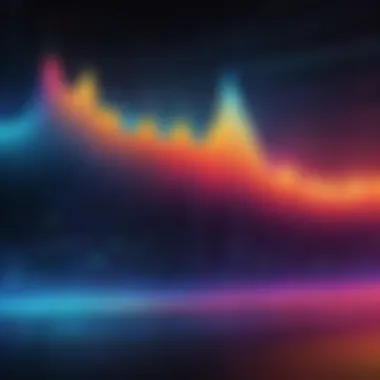
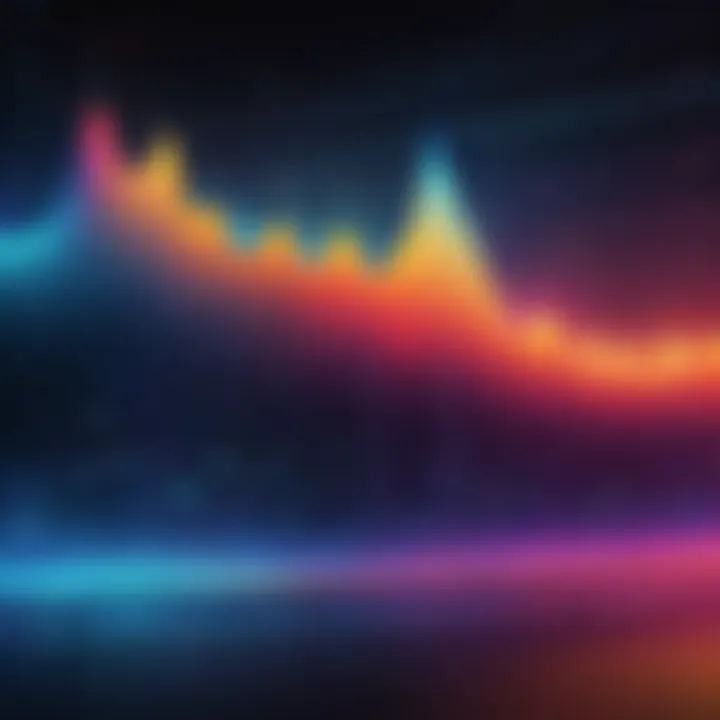
The choice of software often echoes an artist's intent. For instance, Processing is favored for its accessibility and ease of use, making it suitable for both novices and seasoned creators. This open-source language fosters collaboration within the art community, enabling artists to share their code and ideas.
Moreover, software comes with a myriad of functionalities. It's not just about creating visuals; it also allows artists to embed interactivity into their pieces, drawing viewers into the experience. Using tools like Unity, artists can design virtual environments where participants shape their paths through exploration.
"The tools we choose reflect our artistic vision and impact how audiences connect with our work."
Hardware Innovations
Hardware in tech art may not always be at the forefront of discussion, but it's equally crucial. Recent decades have brought remarkable advancements that have expanded possibilities for creators. Devices like the Microsoft HoloLens and Oculus Rift have given rise to new artistic forms. Artists can now explore augmented and virtual realities, creating works that challenge traditional concepts of space and interaction.
Additionally, sensors and microcontrollers like Arduino and Raspberry Pi allow artists to build responsive installations. These tools enable real-world engagement, where the physical environment directly affects the artwork. Imagine an art piece that reacts to audience movement or changes according to sound input; this is where hardware innovation shines.
Furthermore, the integration of AI and machine learning is reshaping the landscape. Hardware can now interpret vast amounts of data, fostering generative art forms that evolve over time. This dynamic interplay between software and hardware enriches the artist's toolkit, paving the way for experimentation.
Impact of Tech Art on Culture
The intersection of tech art and culture reveals a complex web, one that shapes perceptions and redefines values in the modern era. As technology encroaches upon every corner of daily life, the art produced within this sphere does not merely mirror society but actively engages with and transforms it. This fusion raises important questions about creativity, identity, and the evolution of aesthetics.
Rethinking Aesthetics
Artistic expression has always been a reflection of the times, but in the age of tech art, there is a profound shift in how aesthetics are perceived and created. Traditional notions of beauty are being challenged. For instance, consider how digital artists utilize algorithms to produce vibrant, complex artworks that can be both mesmerizing and unsettling. These creations often provoke conversations about what it means to be 'artistic'. Instead of paint on canvas, we find code, surrounded by pixels, leading to new aesthetic categories that prioritize interactions over static visuals.
- Dynamic Engagement: Many tech art pieces encourage the viewer to interact with them. This relationship transforms the observer from a passive recipient into an active participant. For example, installations like teamLab Borderless utilize motion sensors where the audience’s movements create a fluid experience, effectively blurring the line between creator and viewer.
- The Role of Data: With data being a buzzword today, artists harness it to generate work that speaks to social issues, environmental concerns, and personal narratives. The aesthetics emerge not only from visual appeal but also from the narratives these artists construct, reflecting collective anxieties over modernity.
When discussing the evolution of aesthetics, we must not overlook cultural implications. This new form of art reiterates the importance of context, making it clear that aesthetic appreciation now involves understanding the technological framework behind the pieces.
"In tech art, the journey is just as important as the destination."
Social Commentary through Tech Art
Tech art has evolved to become a platform for social commentary, providing artists with a unique lens through which to critique contemporary issues. It has a dual power not only to represent societal challenges but also to inspire change.
- Reflections of Society: Works like The Obliteration Room by Yayoi Kusama start as blank canvases, only to be transformed into colorful chaos through participatory actions. This method makes a statement about consumerism and collective experience, inviting viewers to reflect on their roles in a society overly saturated with information.
- Tech and Inequality: Artists such as Heather Dewey-Hagborg use technology to address privacy issues and the ethics of surveillance. Her pieces explore themes of identity and the implications of genetic data, compelling audiences to question what it means to be 'seen' in the modern world.
- Raising Awareness: Furthermore, exhibitions that leverage digital platforms allow for diverse voices that may not have had representation in traditional art spaces, showcasing underrepresented groups and issues.
Tech art clearly doubles as both a mirror and a megaphone, allowing artists numerous avenues for dialogue. By weaving creativity deeply with trending technologies, artists make poignant statements, urging societies to rethink, reflect, and potentially reshape the futures they inhabit.
As we dive deeper into tech art, understanding its cultural impact becomes essential, paving the way for future discussions surrounding its role in education and the broader societal fabric.
The Role of Tech Art in Education
Tech art has carved out a substantial niche within the educational environment. It echoes the changing landscape of how we interact with creativity and technology. As schools and universities begin to realize the potential of integrating technology into the creative process, tech art emerges as a crucial bridge connecting traditional artistic practices with cutting-edge technology. In teaching environments, the ability to fuse these disciplines can prepare students for a workforce that increasingly demands skills across a spectrum of practices.
Educators face the task of not just filling minds with information but fostering an adaptable, creative mindset. The incorporation of tech art into curricula serves not only to engage students but also to equip them with the tools necessary to navigate the complexities of modern creative industries. This blend becomes particularly vital in our rapidly changing world, where understanding tech's role in art—such as algorithmic creation or immersive experiences—can set students apart.
Integrating Tech Art into Curricula
To effectively weave tech art into educational programs requires a careful approach that balances traditional art teachings with modern technologies. It's not merely about loading a course with new software or fancy gizmos; it needs to be about a holistic transformation. Here are some strategies educators can adopt:
- Cross-Disciplinary Projects: Think about merging subjects like computer science, design, and art. For instance, a project could have students create an interactive installation that combines coding with visual arts.
- Workshops with Professionals: Bringing in experts in tech art to run workshops can invigorate students’ imaginations and provide firsthand insights into the industry.
- Hands-On Technology: Offering access to technologies like 3D printers, VR equipment, or generative art tools allows students to experiment and innovate.
The objective is to not just know how to use tools, but to understand their potential in advancing creative expression. Having diverse experiences enables students to think outside the box and apply critical skills in unexpected ways.
Fostering Creativity and Innovation
Tech art education doesn't just teach students how to make art. It cultivates an environment ripe for creativity and innovation. There are several key aspects of this transformative potential:
- Encouragement of Experimentation: In tech art, failures often lead to breakthroughs. Students learn to iterate on ideas, refining their concepts through trial and error. This flexibility fosters a classroom culture where it's okay to explore uncharted waters.
- Shared Community: Collaborative projects often encourage students to work together. As they combine different viewpoints, sparks fly, generating innovative solutions to artistic challenges. Social media platforms can also serve as a space for sharing ideas and fostering a community of budding artists.
- Problem Solving Skills: Tackling tech art problems—whether that’s debugging code for an interactive piece or optimizing a software tool for visual effects—sharpens critical thinking abilities. Students learn to navigate challenges comprehensively and resiliently.
In summary, by integrating tech art into education, schools prepare students not just to be artists but thinkers ready to compete in an increasingly digital landscape, as technology and creativity continue their dance toward the future.
"Education is the most powerful weapon which you can use to change the world." - Nelson Mandela
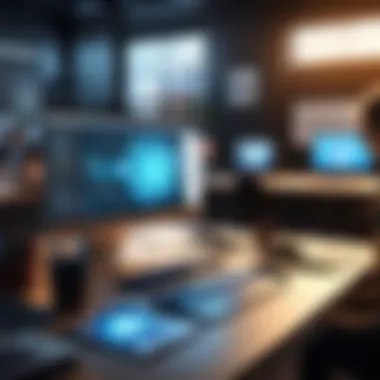
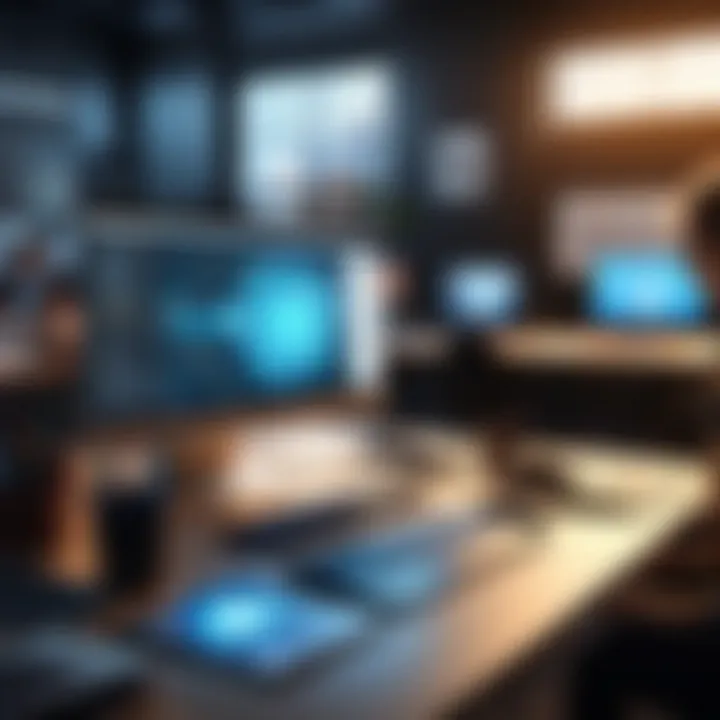
Through these approaches, tech art holds the power to transform not just the students' experiences, but also the very structure of educational frameworks, turning classrooms into incubators of innovation.
Challenges in Tech Art
In the realm where creativity meets technology, challenges are par for the course. Tech art pushes boundaries but also raises complex questions regarding authenticity, originality, and ethics. These challenges are not mere bumps in the road; they are fundamental considerations that can shape the future of the discipline. Addressing these issues can lead to a deeper understanding of tech art, enhancing both the artist's and the audience's appreciation.
Authenticity and Originality
The concepts of authenticity and originality frequently sit at the forefront of discussions in tech art. With artists increasingly relying on digital tools, one might wonder: what does it truly mean to create something original? An artist utilizing software to blend images, sounds, or even data can easily produce work that feels fresh, yet it often draws from a well of existing templates and algorithms. This raises an eyebrow. Can these pieces be labeled as original if they stem from pre-existing codes or designs?
To delve deeper, let's consider generative art. Artists like Casey Reas and Joshua Davis harness algorithms to produce unique, often unpredictable results. Although the end product can appear remarkably original, the underlying methodology of using pre-set algorithms becomes a point of contention. This isn't an isolated case; it circles back to older artistic movements. For instance, the Dadaists played with chance and found objects, making one wonder if they’re any different than today’s digital creatives.
Many artists confront these questions head-on and often choose to highlight their processes instead of focusing solely on the final product. However, the audience might still grapple with the question of ownership. When multiple artists utilize the same software, how do we assign credit or validate the significance of their works? (
- Does the medium dictate ownership?
- Should every artist be transparent about their tools?
- What role do the machine and the algorithm play in the artistry?
"The artist is not a special kind of person; every person is a special kind of artist." - Herbert Read
The debate continues to inspire, push boundaries, and compel artists to rethink their methods and motivations, fostering a sense of community amidst the uncertainty.
Ethical Considerations
As tech art continues to evolve, ethical considerations become increasingly prominent. Just as with any evolving field, new technologies often prompt questions about societal implications and the potential for misuse. One pressing concern is the use of data in artworks. Many digital installations and pieces rely on publicly accessible information—like social media feeds—to create compelling narratives. This raises eyebrows regarding privacy.
Artists must navigate these waters carefully. For example, is it ethical to extract data from personal social accounts without explicit consent? Even if the data serves a broader artistic purpose, implications about ownership and personal privacy can create a storm of criticism.
Moreover, the accessibility of tools for creating tech art can lead to the unauthorized replication of another artist's work. This worry is compounded in the digital realm, where an artwork can be copied and shared without trace. Artists constantly question how to protect their innovations while promoting an inclusive space for creativity.
Regulations surrounding intellectual property are not always aligned with these new forms of expression, creating a gray area for emerging tech artists. It’s vital for artists, professionals, and the public alike to engage in ongoing conversations around these ethical dilemmas. (
- How can artists ensure ethical practices in data usage?
- What guidelines should be established around ownership in tech art?
- How might future regulations adapt as tech art evolves?
There's no denying that the challenges facing tech art are significant. However, meeting these head-on could lead to a more profound, considered artistic practice for generations to come. As tech continues to grow, so must our understanding and responses to the ethical boundaries it creates.
The Future of Tech Art
The future of tech art stands as a burgeoning landscape alive with potential, shaped by rapid advancements in technology. As artists continue to harness the capabilities of machines, the dialogue between creativity and technology grows increasingly complex. This section delves into anticipated trends and innovations, emphasizing how tech art not only reflects contemporary societal issues but also promotes unique forms of expression through gadgets and software.
In understanding the future, it’s vital to recognize the implications of emerging tools and mediums. From augmented reality to artificial intelligence, the capacity for tech art to influence and reshape narratives is profound. Artists are not merely adopting technology; they are melding it with their visions, opening paths to experimental techniques and forms that were once thought unfeasible.
Trends to Watch
- Integration of AI in Artistic Practices
The rise of artificial intelligence is not just a trend but a seismic shift in how art can be created and experienced. Algorithms are now capable of producing remarkable pieces, generating everything from music compositions to visual art. As AI continues to learn, the boundary between human creativity and machine-generated content will blur further. - Increased Use of Virtual and Augmented Reality
Artists are increasingly leveraging virtual and augmented reality to create immersive experiences that engage audiences on multiple levels. This technology not only provides new dimensions to storytelling but also allows for interactive installations that challenge the very idea of an observer. Imagine walking through a gallery where artworks change based on your mood or actions! - Emphasis on Interactive installations
The more art incorporates audience interaction, the more engaging it becomes. With tech art, the viewer often becomes a participant, making choices that influence the outcome of the art piece. This shift encourages a more profound connection between the artwork and its audience. - Sustainable Practices
As awareness around environmental issues grows, artists are beginning to focus on sustainability in their creations. This could mean using recycled materials, or digital formats that minimize waste. The convergence of technology and eco-consciousness promises to birth innovative new forms of tech art
"The future isn’t just here; it is a canvas painted with the colors of innovation and tradition intertwined."
Potential Innovations on the Horizon
The realm of tech art is poised for remarkable innovations that could redefine many aspects of artistic creation:
- Generative Art powered by Neural Networks
Neural networks are becoming more adept at generating unique art forms, challenging traditional standards of what creativity means. These generative systems can produce completely new styles based on vast datasets of historical artwork, creating a synthesis that is both novel and deeply rooted in the past. - Bio-art Collaborations
There is a growing interest in the intersection of biology and technology, leading to bio-art—where living systems are utilized as part of the artwork. Through innovative techniques, artists might embed living organisms into their pieces, leading to dynamic installations that evolve over time. - Blockchain for Provenance and Ownership
With the rise of digital art, issues of authenticity and ownership become paramount. Blockchain technology could provide a solution, offering transparent chains of ownership, thus adding value to digital artworks, much like physical art pieces. This could lead to a new model of collecting, experiencing, and valuing art. - Holographic Displays
As display technology advances, we could see a shift towards holographic presentations of art. This innovation will allow for multidimensional displays that enhance the viewer's experience, making the environment feel alive with art.
Ending
In summarizing the concepts discussed throughout this article, it's clear that tech art serves as a vital bridge between creativity and technology. This intersection not only redefines artistic expression but also influences cultural landscapes in profound ways. By fusing technical skills with imaginative ideas, artists are not just creating art but also reshaping societal narratives. The evolution seen in this domain highlights the transformative potential of technology when paired with human creativity.
Summarizing Key Insights
- Interconnectivity: One key takeaway is the undeniable interconnectedness of art and technology across various platforms, including social media and digital installations. This fusion has paved the way for new opportunities in artistic presentation.
- Cultural Impact: Tech art's capability to serve as a mirror reflecting societal issues cannot be overstated. Through interactive and immersive experiences, it enables audiences to engage in ways traditional forms of art cannot.
- Dynamic Nature: The landscape of tech art is ever-changing. With trends evolving, it encourages artists to continuously adapt, ensuring that art remains relevant in a fast-paced digital world.
- Educational Initiatives: Integrating tech art into education can vastly enhance critical thinking, innovation, and creativity among students, preparing them for future endeavors in an increasingly digital landscape.
"Tech art isn't just an aesthetic choice; it's a commentary on the ways we interact with technology in our daily lives."
Final Thoughts on Tech Art
Looking ahead, the role of tech art seems destined to expand. As emerging technologies such as AI and augmented reality further infiltrate artistic domains, the possibilities for creativity are limitless. Artists who embrace these technologies will be at the forefront of a movement that not only challenges conventional ideas about art but also invites audiences into a participatory experience.
Moreover, as society grapples with ethical quandaries surrounding technology, the implications of tech art in projecting these challenges are ever more critical. The conversation that tech art sparks about identity, community, and responsibility forms an essential part of our future artistic dialogue.
In essence, understanding tech art equips us to better appreciate the complex interplay between human creativity and technological innovation. It's about time we give it the recognition it deserves, for it holds the keys to a future where art, technology, and society coalesce harmoniously.







